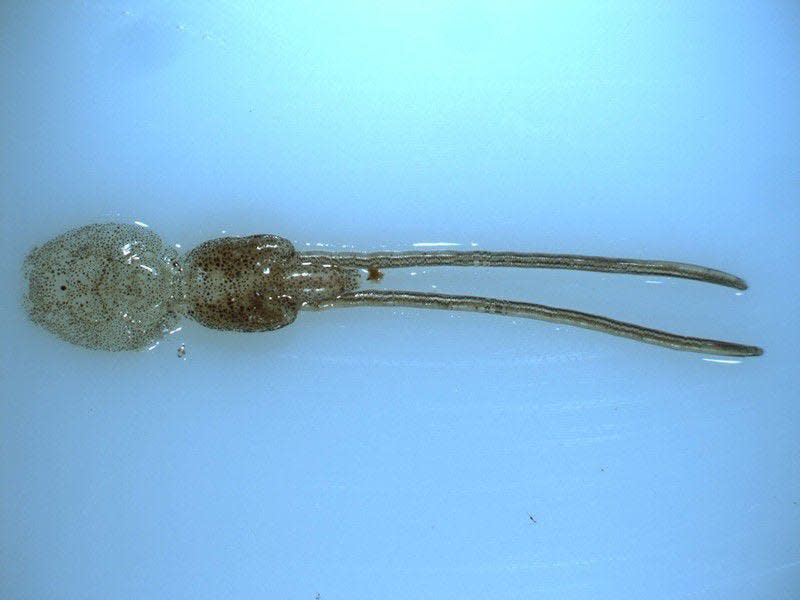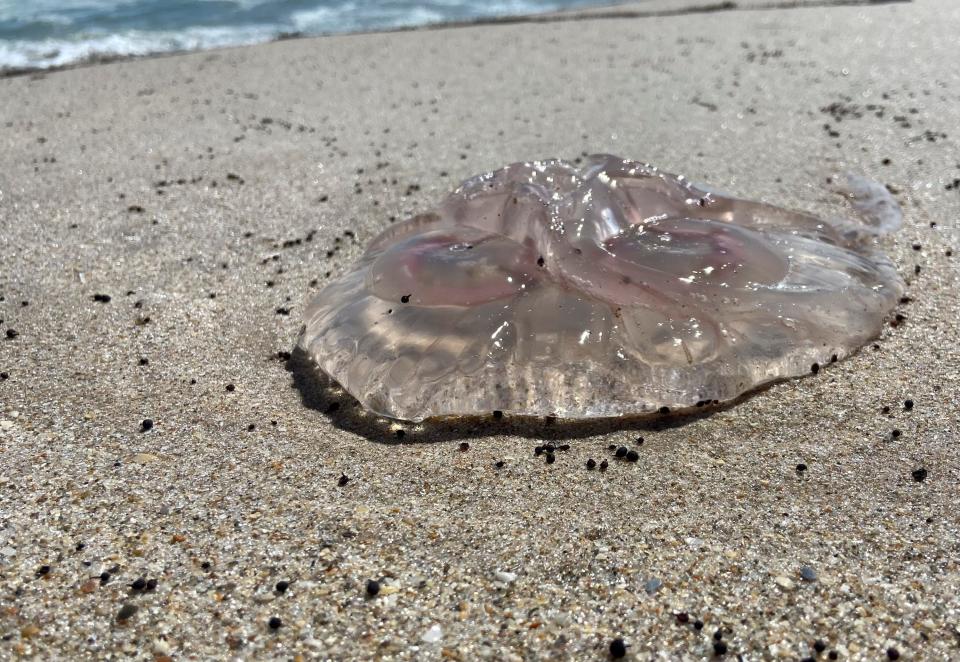Moon jellies, sea lice, seabather's eruption: What are they; how to treat jellyfish stings
Moon jellies and jellyfish larvae, commonly known as sea lice, thrive in the summer. Warm-water temperatures and strong onshore winds are ideal conditions for them to pop up across area beaches.
In Martin, Indian River and St. Lucie counties, locals began reporting moon jellies on local beaches earlier this month. Now, according to officials in all three counties, moon jelly presence has died down.
They've cleared up on Martin County beaches over the last few weeks, according to Ocean Rescue Capt. Derick Brown.
Most reports of jellyfish larvae stings come from word of mouth or when lifeguards train in the morning, reporting what they see or experience in the water, Brown said.
What is sea lice?

Sea lice is a parasite that feeds off fish, not humans. But, why are jellyfish larvae stings called sea lice?
It is believed the term was coined in the 1950s by Floridians to describe the itchiness of the larvae sting, according to the Miami-Dade Florida Health Department.
After being stung by jellyfish larvae, a person experiences a reaction called seabather's eruption.
What is seabather's eruption?
Seabather's eruption is an itchy red rash caused by jellyfish larvae stinging people in the ocean.
Their microscopic size makes them hard to see in the water, so it's hard for swimmers to avoid them.
"In the case of sea lice, they tend to sting in areas where they come into close contact with the skin, like under a bathing suit," explained Zack Jud, director of education at Florida Oceanographic Society in Stuart. "And then the pressure of the bathing suit, or the pressure of somebody sitting down on a beach chair after swimming, causes their stinging cells to puncture our skin, and that's where the irritation comes from."
Jellyfish larvae are most common in the summer because of warm water temperatures and winds coming from the east, blowing the organisms into areas where they could come into contact with swimmers.
What to do if you get seabather's eruption
Seabather's eruption is treatable at home with an over-the-counter antihistamine such as Benadryl, a hydrocortisone cream or calamine lotion. The rash can last one to two weeks, according to National Capital Poison Center.
It is recommended to wash swimwear in hot water and to put it in a dryer to ensure jellyfish larvae are gone. However, if you have a severe rash it is recommended to get rid of the swimwear, according to WebMD.
What are moon jellies?

Moon jellies are a species of jellyfish with small, spiny tentacles that rub against people causing the sting.
It takes warm water temperatures coinciding with strong onshore winds and currents to push them inshore.
Moon jelly movements mostly are driven by ocean and wind current patterns, as well as food availability, according to Jud, of Florida Oceanographic Society. An uptick in moon jellies often coincides with an increase in plankton, its favorite food source.
Since initial reports, moon jelly sightings have cleared up on St. Lucie County beaches, according to county spokesperson Erick Gill.
Indian River County also reports sightings of moon jellies, but they've cleared in recent days, according to Patrick Sullivan, president of the Vero Beach Lifeguard Association.
What happens if you get stung by moon jellies?
Most people experience only a mild reaction from moon jelly stings, but some are more sensitive and end up with red marks and swelling.
If you're stung by a moon jelly, MD Now Urgent Care recommends:
Removing any stingers stuck to the skin with the straight edge of a credit card or by rinsing the area with seawater. It is not recommended to use fresh or bottled water because it can worsen the symptoms.
Rinsing the sting site with vinegar or a mixture of baking soda and seawater for 15-20 minutes.
Soaking the irritated area in hot water or covering it with a cold compress. You also can ease the pain by applying calamine lotion, using a mild hydrocortisone or taking an oral antihistamine.
Staff writer Laurie K. Blandford contributed to this report.
Gianna Montesano is TCPalm’s trending reporter. You can contact her at gianna.montesano@tcpalm.com, 772-409-1429, or follow her on Twitter @gonthescene.
This article originally appeared on Treasure Coast Newspapers: What are moon jellies and sea lice?

